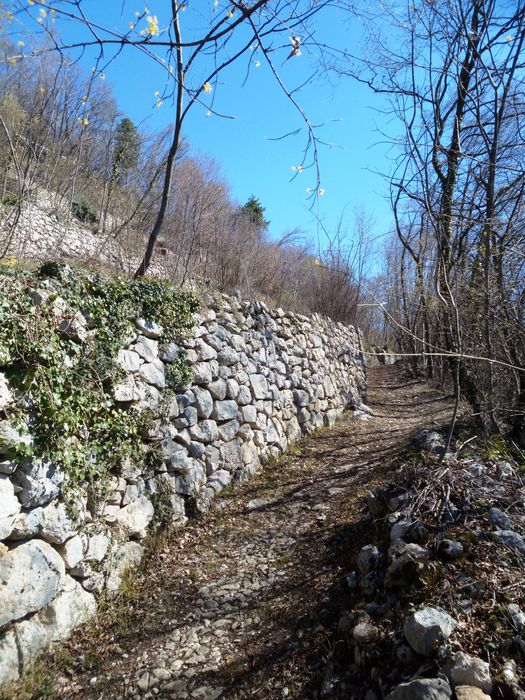To live in The farms in the Marostica landscape






"Masiere" are dry-stone walls that support terraced land. A "masiera" is made of stones that have been chiseled just enough to make them match each other, interspersed, from time to time, with "scaje", a term used in local dialect to indicate the residues of stone working, i.e. splinters.
Making these walls is hard work, done with the help of a few simple tools, among which the inevitable wheelbarrow. Human intervention often causes serious aesthetic-ecological damage to the territory, but with "masiere" it can be said that man worked wisely, making the contours of the landscape softer and more pleasant, reconciling practical needs with aesthetic needs.
To convince yourself of this, just observe the stretches of hill between contrà Busabionda and contrà Campi, or along the Val d'Inverno or the adjoining Bressan-Simonetto house, one of the rare ones that has preserved its ancient appearance, in Valle San Floriano. Life blossoms among the stones of the dry-stone walls: insects, lizards, wasp and hornet nests, patches of green dotted with multicoloured flowers.
Some terraces contain a whole series of tricks to channel the water flow, an extremely important factor in humanized mountain areas. Ladders of various shapes and other types of opening of different widths suitable for cattle, small carts or sledges help the passage from one terrace to the next.
These terraces have their own cultural-historical significance. They are a sensitive manifestation of the uses that a society makes of the environment in which it lives, of the ways of interacting with it, marking it with its activities and its works. In this way the landscape not only becomes meditative, but also sends a message.
Source: text by Attilio Bertolin from “Suggestioni del Mondo Rurale Uomini Campi Boschi” (Suggestions from the Rural World: Men, Fields, Woods).
To love
Titolo di questa sezione correlata
To visit
This point of interest is part of
-
![]() The great masiere (dry-stone walls) of Val Costolo
The great masiere (dry-stone walls) of Val Costolo
The route leads visitors to discover the inhabited areas that bear witness of life on the hillside: old and abandoned ...
-
![]() The small masiere (dry-stone walls) of the districts of Busa Bionda and Campi
The small masiere (dry-stone walls) of the districts of Busa Bionda and Campi
A route with enchanting views, embellished by ancient masiere, i.e. dry-stone walls that used to fence patches of land made ...

